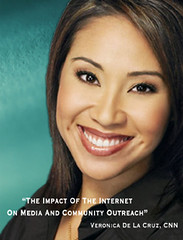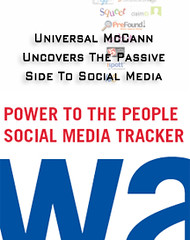Valeria Maltoni, Conversation Agent, did her usual excellent job covering the debate between Jeff Jarvis and Michael Tomansky about citizen journalists. It's a conversation I'll be picking up tomorrow (today got away from me).
It's truly is a worthwhile discussion. I only wish those discussing it would give a nod to history, making the point that this is not a new debate and appreciating that the so-called formalization of journalism is a relatively new concept, spurred on largely by the Internet. But I'll save that for tomorrow.
Today, it seems fitting to mention something else about citizen journalism. Both CNN and The New York Times are considering methods that may lift up citizen journalists once and for all. Both are discussing the feasibility of allowing citizens to submit stories online, some of which will then be sourced for the news. Along with them, other media outlets see the potential of citizen journalism as especially useful to shine light on non-profit organizations.
Currently, it's also slated to be part of "The Impact Of The Internet On Media And Community Outreach," a presentation being delivered by Veronica De La Cruz, news anchor and Internet correspondent for CNN’s flagship morning news program “American Morning.” Her speech will be given at The Lions HealthFirst Foundation Inaugural Dinner in Las Vegas on May 16.
I don't expect most people outside Las Vegas will hear too much about the event. Seating is limited to 50 people. I'll do my best to cover portions of it. Veronica De La Cruz is always very accommodating.
The dinner also comes at great time for the Lions HealthFirst Foundation, a public charity that maintains a community health education and preventive screening program for the purpose of reducing the rate of stroke, heart attacks, and cancer.
Sadly, the continuing health scare in southern Nevada has caused a 40 percent drop in participation of this low cost and free health screening program. It’s a travesty because the foundation had nothing to do with the crisis and their screenings are completely non-invasive.
Copywrite, Ink. is among the sponsors, along with Aaron Lelah Jewelers; CNN; Las Vegas International Lions Club; McCormick & Schmick’s; and Herb Perry, public affairs director for CBS Radio Group. All proceeds from the event will benefit Lions HealthFirst Foundation.

It's truly is a worthwhile discussion. I only wish those discussing it would give a nod to history, making the point that this is not a new debate and appreciating that the so-called formalization of journalism is a relatively new concept, spurred on largely by the Internet. But I'll save that for tomorrow.
Today, it seems fitting to mention something else about citizen journalism. Both CNN and The New York Times are considering methods that may lift up citizen journalists once and for all. Both are discussing the feasibility of allowing citizens to submit stories online, some of which will then be sourced for the news. Along with them, other media outlets see the potential of citizen journalism as especially useful to shine light on non-profit organizations.
Currently, it's also slated to be part of "The Impact Of The Internet On Media And Community Outreach," a presentation being delivered by Veronica De La Cruz, news anchor and Internet correspondent for CNN’s flagship morning news program “American Morning.” Her speech will be given at The Lions HealthFirst Foundation Inaugural Dinner in Las Vegas on May 16.
I don't expect most people outside Las Vegas will hear too much about the event. Seating is limited to 50 people. I'll do my best to cover portions of it. Veronica De La Cruz is always very accommodating.
The dinner also comes at great time for the Lions HealthFirst Foundation, a public charity that maintains a community health education and preventive screening program for the purpose of reducing the rate of stroke, heart attacks, and cancer.
Sadly, the continuing health scare in southern Nevada has caused a 40 percent drop in participation of this low cost and free health screening program. It’s a travesty because the foundation had nothing to do with the crisis and their screenings are completely non-invasive.
Copywrite, Ink. is among the sponsors, along with Aaron Lelah Jewelers; CNN; Las Vegas International Lions Club; McCormick & Schmick’s; and Herb Perry, public affairs director for CBS Radio Group. All proceeds from the event will benefit Lions HealthFirst Foundation.

















